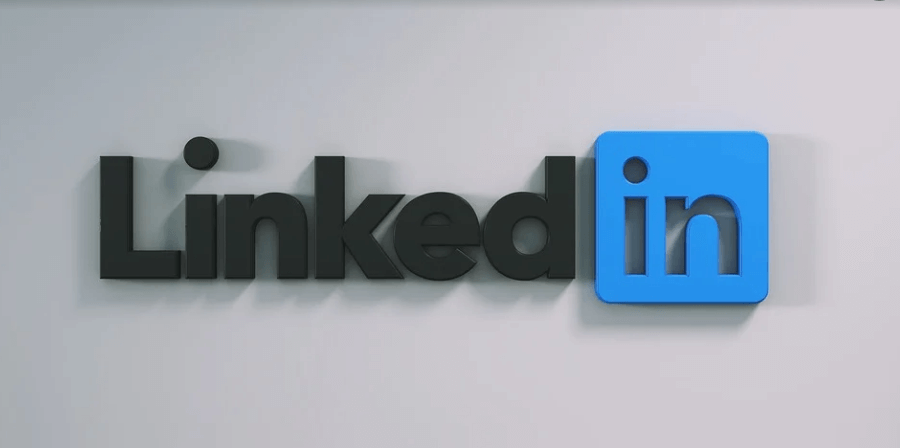Introduction
The rise of social media has transformed business as we once knew it. In the past, business owners were limited in how they interacted with customers, how they collected information about them, and how they marketed new products and services to them.
Today, these structures have been removed, permitting business owners to gather information, learn, and respond much faster than ever before.
It has also transformed the business landscape in another way: by creating a rift between those who know how to navigate social media sites and services; and those who do not.
Those who don’t know how to use social media services may find themselves on the defensive constantly—doing anything to retain customers—even if they had a successful business model only years ago. On the other hand, those who feel comfortable with social media may now find themselves at a significant advantage.
Whether you’re currently using social media to promote your business or are thinking about doing so, it is important for you to understand how to do it correctly. It’s critical for social media to be a major component of your marketing plan, no matter the size of your business.
No matter whether you’re inexperienced or a veteran social marketer, if you don’t have the right information, it can be easy to botch a marketing campaign or simply run out of ideas.
In the rest of this guide, I’m going to provide you with 30 stand-alone tips that you can use to integrate social media into your business, use it to market your products, use it to find new customers, and use it to manage existing customers, and extract information from them.
Tactic #1: Be Consistent with Your Social Media Identity

Now that you’re ready to enter the world of social media, it’s important for you to spend some time carefully thinking about your social media identity before you create a Twitter account, launch a Facebook fan page, and begin to market your business through social media channels.
The first thing you will want to do is decide whether you should market your business as your business, as yourself, or as both. Each of the three options has benefits, but it is ultimately up to you to decide which will work best for your particular situation.
Once you have selected your route, you should create accounts on social media sites and set up a profile that reflects your choice. For instance, a Twitter account for your business should focus exclusively on business activities—and not your personal life.
Tactic #2: Create a Coherent Social Media Message

This tip closely relates to tip 1: once you have your social media site profiles set up, you’ll want to start finding followers; and then using those followers to collect information and market products.
As you go through this process, it is important to maintain a coherent message. For this reason, it might make sense to spend some time planning a general “theme” for your social media profiles.
For instance, is their purpose to alert people to sales and to tell them about contests you are holding? Or is the purpose to discuss the general industry in which your business falls; and mention your new products casually?
There’s not necessarily the best approach to take here, but it is important that you pick one and stick with it. Creating an unclear message and confusing and driving away potential customers who are following you.
Tactic #3: Create a Twitter Profile

Once you have set up your Twitter.com account, it is critical that you spend some time personalizing your profile. Most businesses that do not do this will be perceived as spammers when they ask Twitter users to follow them.
When it comes to setting up a personalized profile on Twitter, there’s not much to do. All you have to do is select a pre-existing background (or create a customized one), select your avatar thumbnail photo, and then fill in some short “bio” and “about me” information.
As far as your avatar goes, it is probably a good idea to use the logo for your business; and it may also be a good idea to create a custom background that also includes your logo.
Finally, remember to add the URL of your business; and to create a bio section that briefly explains 1) what your business does; and
2) what the purpose of this Twitter profile is (i.e. to give away free stuff, to hold contests, or to provide free information).
Tactic #4: Create a Fan Page for Your Business on Facebook

Facebook is one of the most promising social media outlets when it comes to marketing your products. One good way to use Facebook is to create a fan page on the site and to use it to draw in potential buyers.
Start by investing some time to create a high-quality fan page. This page should include links to your site, a well-written description of what you do, and a summary description of the purpose of your fan page (i.e. to provide all of your loyal customers with free information about upcoming product launches, product giveaways, and coupons).
If you don’t yet have enough “fans” to get the ball rolling, it might make sense to start by giving people an incentive to become a fan. You could do something like this: offer everyone who joins your fan page a 20% off coupon for one of your products. You could then say something like “if this fan page has over 5,000 members by July 10th, every fan will get product X for free.”
Tactic #5: Using the Twitter Search Engine

Another approach you can take is to use the Twitter search engine to find Tweets related to your business’s niche. This is an easy way to locate people who might be interested in your products or services.
Once you have located some Tweets related to your niche, you can follow them back to the source, determine whether the person involved might be interested in your niche, and then invite them to follow you if so.
At the start, a lot of people you add may opt not to follow you; however, over time, if you collect 50 new followers each day, you’ll gain momentum. If you make interesting tweets, offer coupons, or tweet vital information, you might get re-tweeted, expanding your reach and possibly bringing in new followers.
Tactic #6: Create a Tutorial Series on YouTube

There are many ways in which you can use YouTube improperly, and get nothing out of it. In fact, that is what most businesses do when they try to make money off of YouTube or video content in general.
If you decide to do this, I personally suggest that you start by creating a tutorial series.
This could be something like 5 videos, each of which covers a topic in an area related to your business.
If the videos are well-made; and if you market them well to get the ball rolling, there’s a good chance you could see a viral effect, where others begin referring friends to your videos without any compensation for doing so.
Tactic #7: Create a Linkedin.com Profile

If you’re not familiar with LinkedIn, you might be surprised to find out that they’ve already collected information about you; and have used it to construct a profile that might include some or all of the following information:
1) where you went to college
2) what jobs you hold or have held in the past;
3) what businesses you have owned, and
4) miscellaneous personal and professional information about you.
If you want to control what that profile says; and to use it to network with other business owners and potential clients, it’s a good idea to start by creating a profile. Once you do that, you have a lot of options in terms of promotion and networking; however, for now, simply worry about getting the ball rolling by creating a profile.
Tactic #8: Put a Thumbnail Photo in Your Social Networking Site Profiles

No matter what social network you are using, it’s always a good idea to place a thumbnail photo of yourself (or at least your business’s logo) where possible. In general, people will be hesitant to interact with profiles that don’t have faces attached to them.
Of course, this is a personal decision and is ultimately up to you; however, if you plan to take your social network marketing efforts seriously, this is an important step to take.
Tactic #9: Promoting Your Business Through Blog-Commenting

Many marketers believe that the only way to get traffic to a blog is to post frequently, ping, and optimize for natural search engine traffic. In fact, one of the greatest ways to generate traffic via blogs doesn’t involve any of this.
The approach I’m talking about is simple: get direct traffic from other blogs by commenting frequently. Of course, it’s important to understand that when I say “comment frequently,” I don’t mean spam other people’s blogs with irrelevant information.
Rather, I simply mean that you should look for relevant conversions in niche blogs; and then make a useful, intelligent comment that links back to your blog.
If you want to know how to start blogging, then you can read. How-Start-Blogging In 2021. All about your blog, in which you will know how to start your blog.
If you spend a lot of time making useful comments, there’s a good chance you’ll re-direct some of the traffic that lands on the big-name blogs to your own. You can then pass this traffic through the sales funnel.
Tactic #10: Encourage Existing Customers to Use Your Facebook Fan Page

There are two benefits of encouraging existing customers to become a fan of your business on Facebook. The first is that you can slowly move away from paid mediums (such as reliance on bulk mail and autoresponders to disseminate important information to customers.
The second major benefit is that you can market new products and services to existing customers without pitching to them directly. You can do this by simply creating a status update on Facebook.
Whenever they log into their account (even if they have no interest in conducting business), they’ll see your status update on their feed. If they find what you’re offering useful, they might just buy.
The best part of all of this is that you didn’t have to make a high-pressure sales pitch, which might be awkward to do with existing clients. Instead, you can simply let them choose which pitches interest them; and which do not.
Tactic #11: Integrate Your Social Media Marketing Efforts with Everything Else

Rather than using your Twitter and Facebook accounts in total isolation from the rest of your business, think about using them as complements. For instance, if you do print advertising, you might consider using it to channel traffic to your social networking site profiles.
For instance, it has become common on news channels to refer watchers to the company (and reporter) Facebook profiles and Twitter profiles.
The reason for this is simple: by getting people to follow them through social networking sites, those news stations gain yet another point through which they can advertise and engage watchers.
If you use this strategy correctly, you could significantly boost the results from your other marketing campaigns by filtering visitors through your network.
This will allow you to capture visitors by getting them to join your network so that you can repeatedly pitch to them (rather than only once) in a low-pressure atmosphere.
Tactic #12: Use Forums to Pull in Site Visitors

Forums make up one of the oldest segments of social networking sites on the Internet. If you’re like most people, you probably “lurk” on a few forums; and possibly post on a few yourself, too.
Forums offer great potential when it comes to capturing visitors for your site. It’s important to keep in mind, though, that all the usual social marketing rules are still in force when it comes to forums.
For instance, just as you wouldn’t make shameless pitches on Facebook, you also shouldn’t do that on forums.
Instead, you should approach them by posting useful information; and then sending readers to your site via a signature at the bottom of each post.
This makes things each for you by helping you avoid high-pressure sales situations; and if you do it correctly, it can be one of the easiest and most profitable ways to draw in new customers.
Tactic #13: Link Up with Seasoned Experts

When it comes to social networks, there are usually influential individuals who have hundreds or thousands of friends/followers; and who many people pay attention to. Of course, there are movie stars and politicians who Tweet, but I don’t mean these people in particular.
Rather, identify the important people in your niche who use Linkedin.com, Facebook.com, Twitter.com, and other social networks. Become friends with these people, and then solicit their help in discrete ways.
Again, the same principle applies that I mentioned before: instead of directly pitching to them, make them pay attention to you by providing useful information and insightful commentary.
On Twitter, this might buy you an influential retweet; and in the blogosphere, this might buy you a link to your site from a high-traffic blog.
Whatever you do, don’t try to spam the influential people you contact. They probably receive hundreds of similar pitches and have grown accustomed to simply ignoring them, so don’t expect them to do differently for you.
Tactic #14: Join Networks Related to Your Niche

Aside from the large networks, such as Facebook, Myspace, and Twitter, there are smaller niche networks. There are also networks for Internet marketing, aviation, golf, and virtually any topic you can imagine.
One of the biggest benefits of joining these niche networks is that everyone on them is a potential customer. This is especially true if you sell business-to-business products or services.
Again, all the same, rules apply if you plan to use these niche sites. Don’t spam members with commercial advertisements, but instead, try to offer something that is truly valuable for free; and then use that to draw in other members and to eventually sell them your products.
Tactic #15: Participate in Discussions with Visitors

Unlike most marketing campaigns you’ve probably run, you can’t simply create an ad, purchase ad space somewhere, and then wait for the buyers to come in. It’s quite the opposite with social networking sites.
Instead of creating a profile, adding some information, and then waiting for people to buy, you should focus some energy on engaging the people who actually do show up.
If they have questions about your business or products, be sure you respond in a timely manner and with thoughtful explanations.
The more you engage your customers, the greater your base of followers will become. At some point, it’ll become self-perpetuating, so that your followers bring in new followers on a regular basis.
But it all starts with you closely engaging your followers.
Tactic #16: Use Your Site to Demonstrate How Your Business Helps Others

Consider doing regular give-aways or charity events. Either give your product to someone who needs it, but cannot afford it, or hold a firesale and give a portion of the proceeds to charity.
Doing these acts of charity will not only make you feel good about yourself, but it will also help you to demonstrate what type of person you are to your customers.
In their eyes, this will boost the credibility of your business; and may give you an advantage over less socially conscious business owners.
Tactic #17: Carefully Consider Trade-Off between Customer Engagement and Your Time

As a business owner, you value your time greatly. You know that every move you make impacts the productivity of the entire business—not just your own.
This is why it is so important for you to cautiously make time-allocation decisions.
When it comes to social media marketing, most would argue that you should err on the side of over-engagement, rather than under-engagement. I agree with this; however, I would suggest that you take steps to automate procedures and to engage customers efficiently where you do it.
As I’ve said earlier, you should treat your social media marketing campaign as a true marketing campaign.
If you were wasting an inordinate amount of time across any other dimension with your business (and weren’t getting any return from it), you’d either change your approach or find more ways to be efficient with your current approach. And that is exactly what you should do here, too.
Tactic #18: Don’t Live in Fear of Making Mistakes

One common theme that paralyzes social media campaigns is the fear of making mistakes. Often, businesses do not even bother to create a Facebook fan page, a Twitter account, or a blog simply because they believe they may make an embarrassing mistake that reflects poorly on the business.
When it comes to social media, it is definitely possible for businesses to make embarrassing mistakes; however, the more common problem that businesses have is that they’re too paralyzed by fear to even build up a fan base to witness such a mistake.
I personally recommend that you work hard to build up your network, and spend less time worrying about making mistakes. If anything, you’re more likely to make these mistakes in the early stages of your campaign, which is exactly when the fewest people will be able to observe them (because you won’t have many followers).
In short—stop worrying so much about the mistakes. Instead, worry more about how you’re going to find more people to follow you.
Tactic #19: Use Your Email List to Find Customers on Twitter

Once you set up a Gmail account and copy over all of your contacts from your autoresponder, you can next consider finding all of your contacts on Twitter. Again, the process will be similar. You will use Twitter to search for each person by email address.
As you find new people, request to follow them. As with Facebook, you’ll find that many will not follow you back; however, at least a few will opt to follow you on Twitter, and this could provide a significant boost to your reach.
Overall, when employing this strategy, you should stay focused on growing your list of Twitter followers; and ignore all other objectives for the time being. If you cannot sell people your products immediately, that is okay. Instead, just worry about getting them to follow you.
Tactic #20: Add a “Find Use Elsewhere” Box on Your Website

In addition to pulling people from social media sites and directing them to your website, you should also think about doing the reverse: taking people who visit your website and getting them to follow you on social media sites.
This might seem counterintuitive at first (after all, don’t you want everyone to eventually end up on sales pages?), but in fact, it can be a highly profitable approach.
The reason for this is that it increases customer/visitor engagement, which ultimately translates into more contact and then more sales.
One way in which you can employ this strategy is by adding a “Find Us Elsewhere” box on your website. This is a small box on your site that contains icons that link to your profile pages on Twitter, Facebook, and other sites.
By clicking these links, visitors can quickly scan your content and decide whether or not they want to follow you or become your friend/fan.
Overall, this is a simple strategy that can yield very large benefits. One of the best things about it is that it is entirely hands-off. Once you create the “Find Us Elsewhere” box on your site, there’s no need to do anything else. Just want for the new friends and fans to show up.
Tactic #21: Create a Discussion Forum for Your Website

Another excellent way to get people to engage the content on your site and to revisit it frequently is to create a forum. Many hosting services now allow you to do this with a plugin.
From there, you can simply manage the site through the control panel, adding forums, managing sticky notes, and deleting posts as necessary.
Of course, creating and managing a forum can be a tricky process. And it is important for you to understand that it is unlikely that your forum will be successful unless you dedicate a significant amount of time to the launch phase.
Without dedicating this time to your site, it will be hard to get it to go from a “ghost forum,” where no one posts to a forum where there is lively activity (and where it is mentioned on other sites).
Tactic #22: Creating a WordPress Blog

WordPress is very simple to use and has an intuitive interface. Adding new pages, blog posts, pics, etc. on a regular basis is a breeze and can be completed quickly. for the reason that the technology is so basic, time spent on formatting is greatly decreased.
Want to add an occasion calendar, video gallery, Twitter Feed, Facebook Fan Box, and more to your site? WordPress generates this doable with plugins, most of which are free or highly reasonably priced.
If you do decide to start a WordPress blog, I personally recommend installing the SEO plugin for starters. After you do that, it’s a good idea to begin filling your blog with relevant content. You can do this by hiring a ghostwriter to create your blog entries for you.
Tactic #23: Using YouTube to Talk to Your Customers Directly

Earlier, we talked about using YouTube to offer a tutorial series to your visitors and customers. Another good use of YouTube is to make live announcements.
This is not for everyone, but if you decide to use it, it has the potential to lend a significant amount of credibility to your business.
Before you whip out the webcam and get to work, first spend some time planning out your video. What do you want to communicate and how do you want to organize your message?
These are important things to ask and answer before delivering a scatterbrained or confusing video message.
Conclusion
P.S – Over the course of this report, we’ve gone over 23different strategies for employing social media services to grow your customer base, market your products, come up with new product ideas, and collect information about your visitors.
Throughout this report, we’ve gone from general suggestions about social media etiquette to specific suggestions about how to use certain social media tools. We’ve also discussed how to create your own social networks and populate them if you believe this will be a good option for your business.
Now that you’ve read all of this, take some time to process it, make plans accordingly; and then jump in. Don’t make the mistake that many other businesses make of waiting and worrying. Instead, get to work building your social media empire; and use it to generate massive flows of income for your business.
